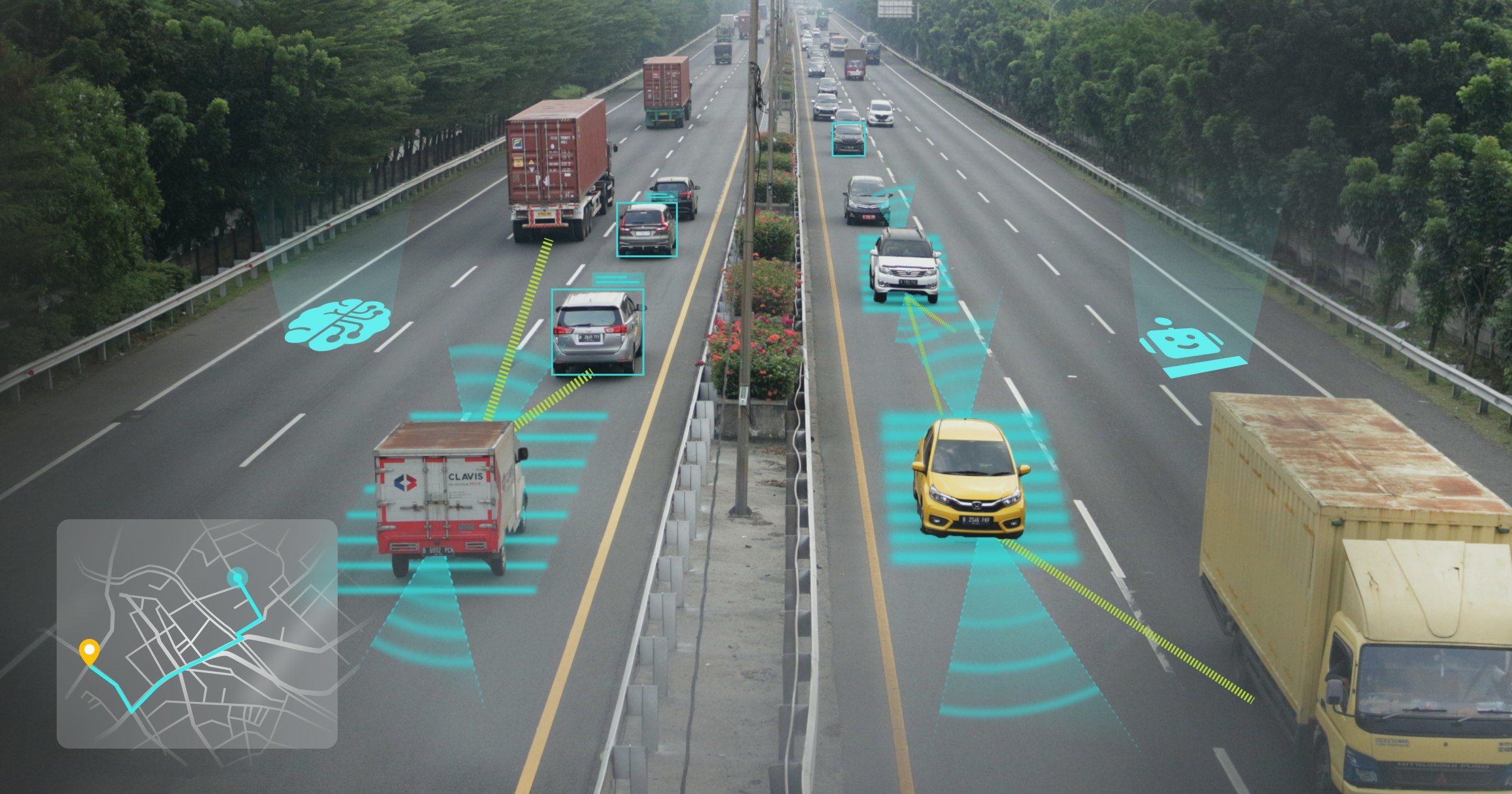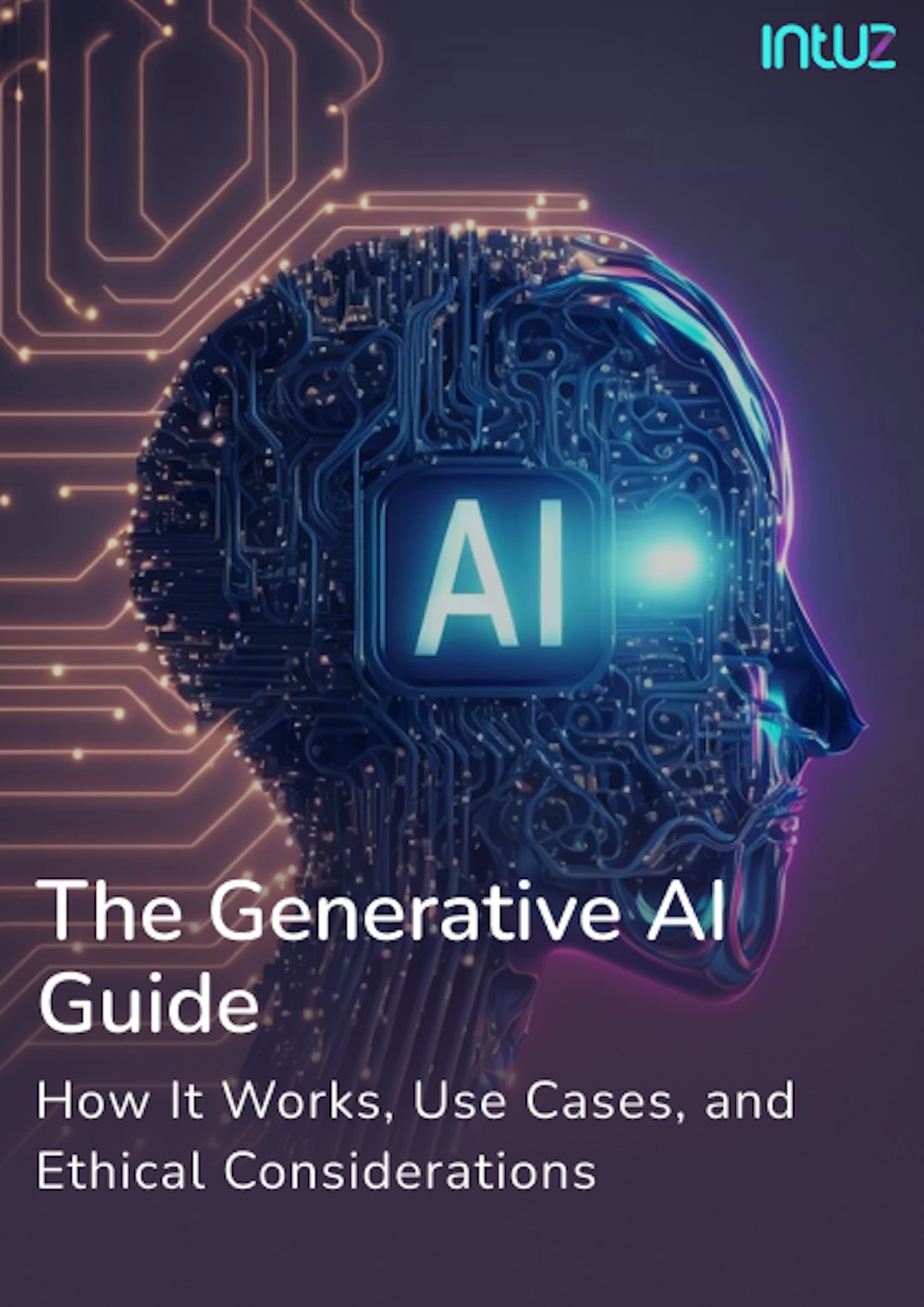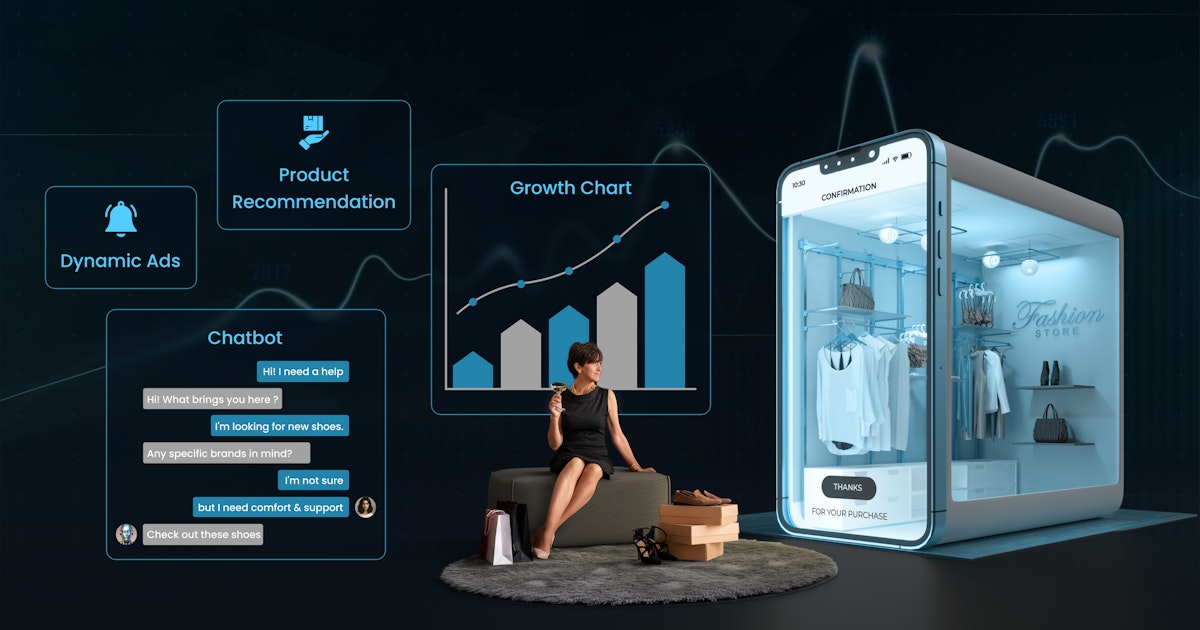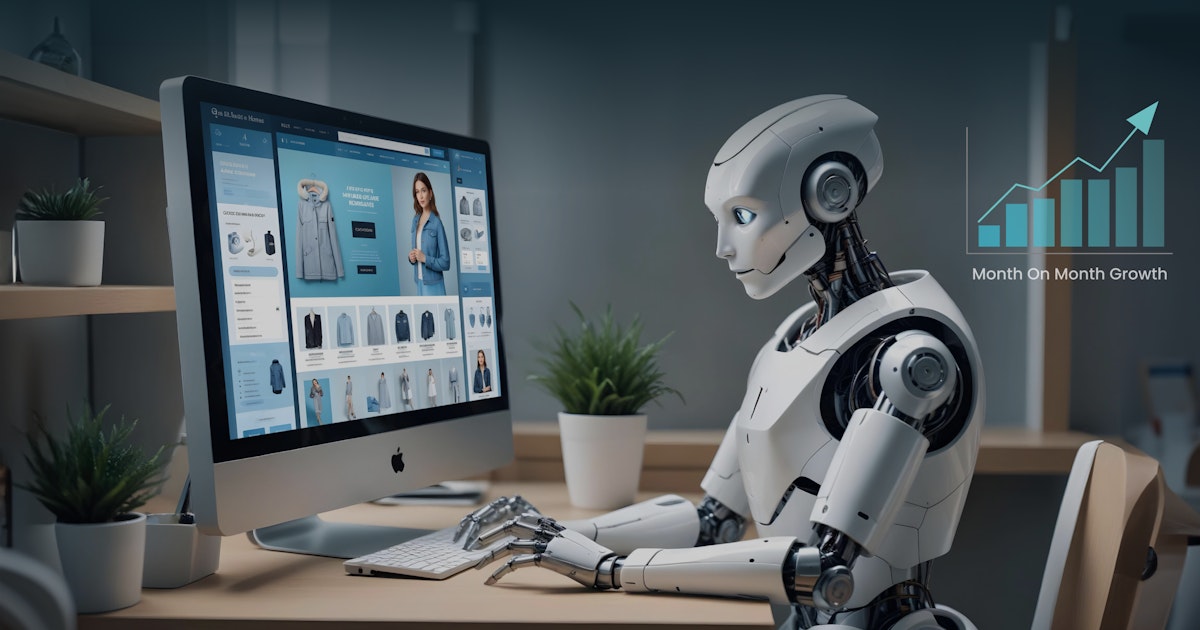Table of Content
The transportation sector is an integral part of our lives. It underpins the movement of people, goods, and services, facilitating economic activity and personal mobility—an infrastructure we can’t imagine our lives without!
On the one hand, transportation connects individuals to workplaces, schools, healthcare, and recreational activities. On the other, it fosters trade and market accessibility through the swift movement of products from manufacturers to consumers.
Interestingly, advancements in transportation technology, particularly in Artificial Intelligence (AI), have enabled the industry to tackle some very important challenges, including:
- Haywired public transportation schedules and routes
- Inefficiencies in logistics and supply chain management
- High rates of accidents due to human error or distracted driving
For transportation companies like yours, leveraging AI isn’t restricted to only keeping up with the latest tech trends. It’s about boosting operational efficiency, saving costs, and serving customers better.
With the global AI in transportation market size valued at $4.48 billion in 2024 and predictions to touch $23.11 billion by 2032, the time has never been better to embrace this technology.
9 Most Practical Use Cases of AI in Transportation
The most practical use cases of AI in transportation are autonomous vehicles, route optimizations, real-time traffic management, fuel usage optimizations, predictive maintenance, predicting demand, AI-powered dynamic pricing, advanced ADAS systems, and personalizing passenger experience with AI assistants. Explore each of them in detail:
1. The future of transportation with autonomous vehicles
Autonomous vehicles rely on a combination of core technologies, which include:
- Sensors: Examples such as Lidar, radar, and cameras provide comprehensive data about the vehicle’s surroundings.
- Computer vision: It processes this data to detect and interpret objects, lane markings, and traffic signals.
- Machine Learning (ML): Its algorithms analyze these interpretations, enabling the vehicle to make real-time decisions and navigate safely.
The potential benefits of self-driving cars are substantial.
One of the primary advantages is increased driver and passenger safety, as AI systems can react faster than humans and aren’t susceptible to distractions or fatigue.
Secondly, reduced traffic congestion can be achieved through optimized driving patterns and coordinated vehicle movements. Improved accessibility is another significant benefit, offering urban mobility solutions for those unable to drive, such as the elderly or disabled.
Tesla’s Autopilot, for example, uses a wide range of sensors and advanced AI to assist with steering, acceleration, and braking. It can navigate highways, change lanes, and even park vehicles autonomously, boosting service reliability and convenience.
2. Optimizing routes and fleet efficiency through AI
Route optimization is the backbone of efficient supply chain management—a must for logistics companies. When your routes are optimized, delivery costs are lowered, and orders are completed on time and in top condition.
AI algorithms study real-time traffic data and weather conditions to determine the most suitable route for delivery. They then select appropriate package delivery windows and assign a delivery executive based on driver schedules.
Approaches like this have helped UPS’ ORION system save an estimated 10 million gallons of fuel annually.
In addition, AI algorithms can power optimized fleet management for you by tracking delivery vehicle locations and automatically detecting any performance issues that could call for repairs or maintenance.
This minimizes downtime from last-minute breakdowns or delays reduces idle time, and extends vehicle life for your whole fleet. It’s also how Amazon manages its fleet to fulfill its considerable delivery obligations worldwide.
The proprietary Amazon scanner tool Rabbit provides real-time data on road conditions and traffic flow to adjust routes accordingly. Having such information at their fingertips helps drivers plan and execute their deliveries more effectively.
Transform your transportation business with AI-powered solutions!
Let's Get Started3. AI-driven real-time traffic management
Imagine being able to navigate through city traffic with ease, knowing exactly where the congestion points are and effortlessly avoiding them. Sure, apps like Google Maps and Maze help a lot in this regard, but AI takes this to another level.
AI-powered applications analyze vast amounts of traffic data in real time. The technology can identify incidents, traffic jams, and other disruptions and suggest alternative routes to ensure smooth travel.
For your transportation company, this means that delivery routes can be optimized on the fly, reducing delays and fuel consumption. The result is more reliable and efficient service, which in turn increases customer satisfaction and lowers operational costs.
Alphabet’s Sidewalk Labs, for example, uses AI to gather and analyze data from various sources, including cameras, sensors, and GPS devices, to create a comprehensive picture of urban traffic patterns.
The AI algorithms identify congestion points and predict potential incidents, allowing for proactive traffic flow analysis and management.
4. Optimizing fuel usage with AI
AI algorithms can study driving behaviors such as braking patterns, speed, acceleration, and routes taken to identify actions that could waste fuel and redirect your drivers to more fuel-efficient routes.
Scania does this with its AI-powered fuel optimization system, which offers real-time feedback to drivers and helps them adopt fuel-efficient driving patterns, brake and accelerate more smoothly, avoid unnecessary idling, and maintain sustainable speeds.
AI technology can also analyze vehicle performance data to ascertain that your vehicles are operating at peak fuel efficiency. This allows you to conduct repairs or part upgrades if necessary and further reduce your fuel costs.
The International Transport Forum states that if transportation companies reduce fuel consumption even by 10%, they can save an average of USD 30,000 per vehicle every year considerably minimize their carbon footprint, and improve environmental impact.
Now, data-driven decisions don’t look difficult anymore!
5. Staying ahead with predictive maintenance
Simply put, with predictive maintenance, AI algorithms can help you tackle issues proactively rather than reactively.
They do so by analyzing large volumes of historical data to identify the factors that could cause wear and tear or even unexpected breakdowns in your vehicle equipment, including engine temperature, vibration patterns, oil levels, and so on.
This information equips you to schedule repairs or tune up your vehicles before problems arise, reducing downtime and avoiding potential road safety hazards. Siemens, for instance, has used maintenance intelligence well.
It uses AI to study data gathered from smart sensors placed on railway trains and tracks and predict when and where repairs will be necessary. This reduces unscheduled depot stops for corrective maintenance by up to 30% and ensures fleet availability by up to 100%.
6. Predicting demand for smoother operations
By studying historical data, market trends, seasonal patterns, and other relevant variables, AI algorithms can predict the demand for transportation services by geography and period, thus allowing you to have enough vehicles and drivers ready in advance.
Ride-sharing apps like Uber use this technology to predict and monitor fluctuations in demand, such as a surge in rides hailed on New Year’s Eve, helping them reduce passenger wait times.
Conversely, depending on demand patterns, you can adjust staffing levels and other resources to optimize your overall costs and avoid maintaining too many drivers and vehicles during the off-season.
UPS, for instance, uses AI to study data on delivery time, package volumes, traffic predictions, and customer buying patterns to plan delivery operations optimally, keeping costs low and maintaining customer satisfaction.
7. Boost revenue with AI-powered dynamic pricing strategies
Dynamic pricing is not just about adjusting prices; it’s about maximizing revenue by responding to real-time market demands. AI-driven dynamic pricing models analyze various factors such as demand and supply, time of day, and bad weather conditions to set optimal prices.
For example, during rush hours or heavy rains, Uber’s AI system considers factors like the number of available drivers, current demand, and traffic conditions to set prices that balance supply and demand.
But there’s more.
AI can also analyze customer data such as travel history, booking behaviors, and social media activity to adjust pricing and tailor promotions dynamically.
This means you can offer discounts on preferred routes, special deals during frequently traveled times, and exclusive rewards for loyal customers.
8. Enhancing safety with Advanced Driver Assistance Systems (ADAS)
Safety is paramount in the transportation industry, and AI is critical in enhancing it. Advanced Driver Assistance Systems (ADAS) utilize AI for object detection and collision avoidance, significantly reducing the risk of accidents.
It evaluates a driver’s actions and physical state in real-time. It tracks eye movements, steering patterns, and reaction times to identify signs of fatigue and distraction and alert drivers to take necessary breaks.
Additionally, predictive analytics use historical data and real-time information to identify high-risk areas and times for accidents. This allows for proactive measures, such as adjusting routes or alerting drivers to potential hazards.
For transportation companies, this translates to fewer liabilities and lower insurance costs. Volvo has long been a leader in automotive safety, and its AI-based safety systems are at the forefront of this innovation.
Its ADAS constantly monitors the vehicle’s surroundings using sensors and cameras, providing real-time alerts to the driver and, in some cases, taking automatic corrective actions to prevent accidents.
9. Personalizing the travel experience with AI assistants
Your customers expect personalized and immediate responses, and AI-powered chatbots deliver just that. These smart assistants can give custom suggestions, like recommending routes, nearby dining options, or music playlists.
In addition, voice-activated in-car assistants allow for hands-free control using simple voice commands. They minimize the need for manual dashboard interactions and provide real-time traffic updates, navigation, and media control, enabling drivers to concentrate on the road, creating safer and more interconnected journeys.
For example, Mercedes-Benz’s MBUX (Mercedes-Benz User Experience) system employs Natural Language Processing (NLP) and ML to comprehend and respond to voice commands, enabling drivers to manage navigation, entertainment, and other in-car systems hands-free.
Custom AI development services - Intuz
Explore ServicesEnter a New Age of Innovation With AI
Are you ready to experience the numerous benefits AI brings to transportation companies? These range from autonomous vehicles and fleet efficiency to fuel optimization, dynamic pricing, enhanced driver safety, and real-time traffic management.
We know we are!
Transform your transportation business with AI-powered solutions to stay competitive and efficient. Partner with Intuz’s AI and ML experts to optimize your operations, enhance safety, and improve customer satisfaction.
Book a 45-minute free consultation with our AI experts to discuss your vision, queries, and how we can help you achieve your goals. We’ll also share a complimentary roadmap for AI app development with you—trust us, you won’t go empty-handed from this call.
So what are you waiting for? Schedule your session today and take the first step toward realizing your dreams.






